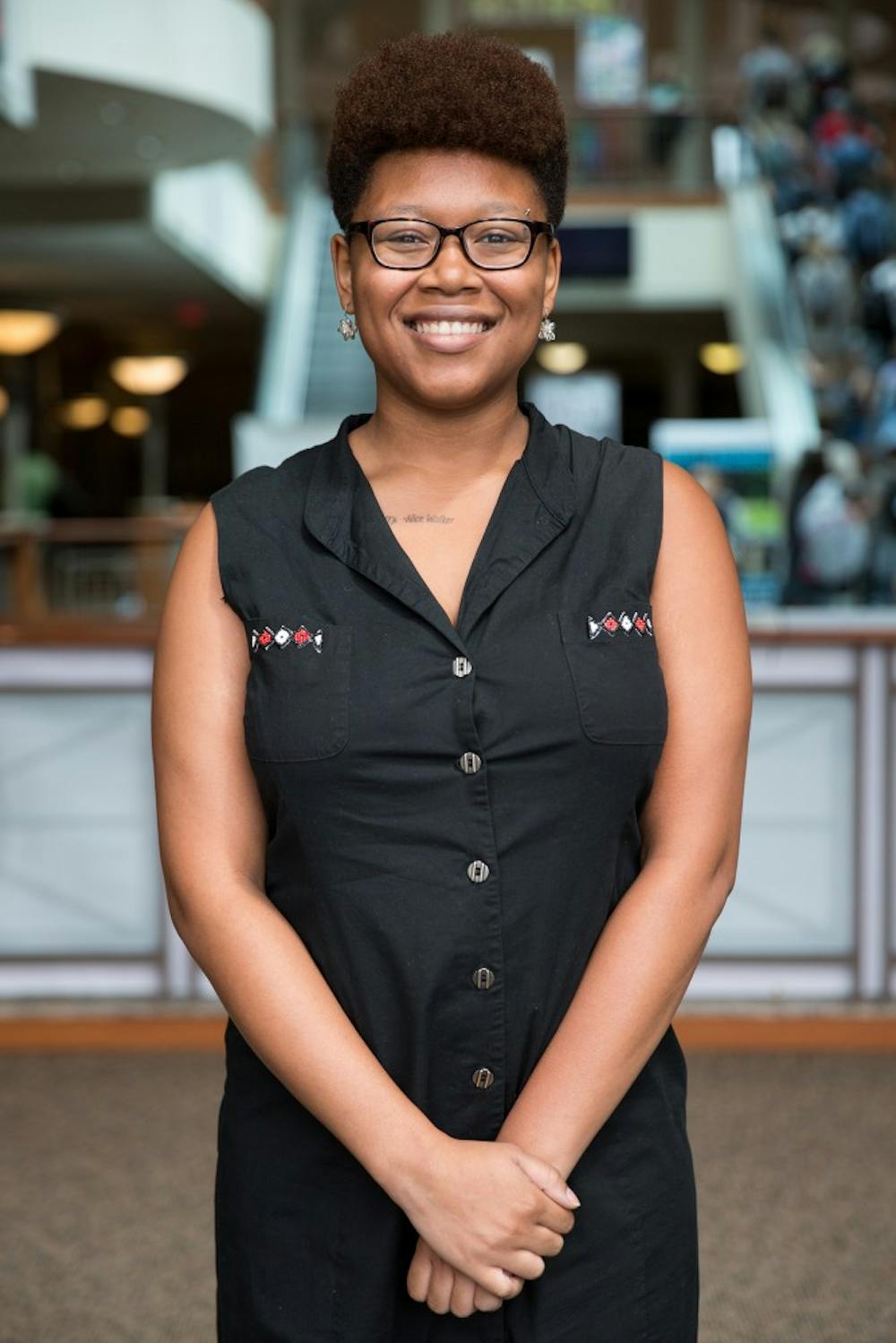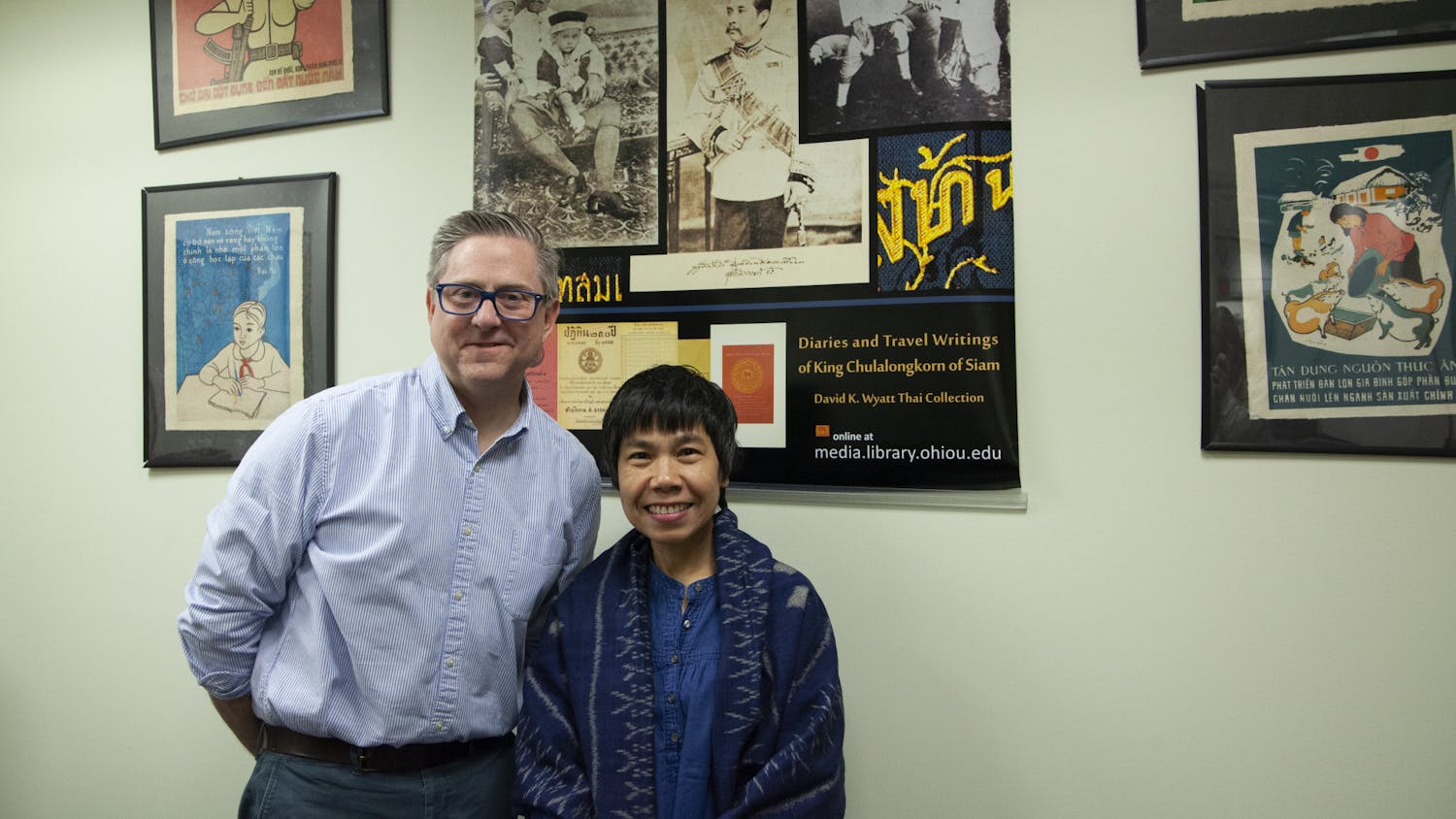There is nothing more satisfying after spending at least an hour washing, moisturizing and detangling my hair, than pulling a scarf over my head and tying a stylish knot. I’ve noticed an increase in turbans and headwraps among the fashion choices of my black female peers here on campus. There is a prevalent natural hair community of black women here at Ohio, and it is not uncommon to see a colorful scarf atop a young woman’s head. The trend, however, is one that represents a complex cultural history, and each time I tie a scarf around my head, I carry a tradition heavy with significance.
Black women have been wrapping fabric around their heads for centuries, for a variety of practical reasons, but the cultural implications of the headwrap have remained pretty consistent. In the days of slavery, slaves were required to wear headscarves as a symbol of their impoverished status. For a while, men and women wore the scarves as a requirement of their slavery, however, the style became associated primarily with female slaves.
Even after slavery was abolished, black women continued to tie pieces of cotton and silk fabric around their heads. Today, black women use headwraps to express their individuality and personal style, while keeping hair healthy. The less manipulation black hair undergoes, the healthier it tends to be, and I know from experience that wrapping my hair up on a daily basis has made it much healthier and easier to care for than it would be otherwise. But the confidence it takes to rock stylishly tied turban finds its roots in the many African tribes from which African American women descended.
Women all across the African continent have been using colorful fabrics to indicate tribe, class and status. For African women, headscarves are a means of expressing one’s own confidence and sense of fashion. There are a variety of ways to tie a headwrap, some more traditional than others, some more formal and some casual and simplistic. Combine the many tying techniques with a multitude of prints and patterns and suddenly there’s a whole new way to accessorize any outfit while channeling one’s cultural heritage.
Today, the headwrap is another one of the many cultural staples for black women, whether used for aesthetic or practical purposes. Of course, along with its cultural relevance comes resistance within American culture at large. Due to its American history as a badge of slavery and servitude, the headscarf has been cast in a fairly negative light in the U.S. Scarfs and handkerchiefs have long been associated with the “mammy” stereotype, and when worn by a black woman, a scarf can sometimes carry with it the negative stereotypes that its wearer is unkempt or lazy. For this reason, and because black women have always questioned what to do with their hair in a professional setting (as black hair on its own has long been viewed as unprofessional), many women question whether their wraps will be acceptable, especially in professional situations.
However, reaching further back in history, beyond America’s existence, headwraps have symbolized pride and prominence for African women for generations. It seems fitting that today’s African-American woman would draw on these contradictory histories and incorporate headwraps into her modern fashion repertoire. As African-American wrap-wearer Alisha Acquaye writes for Everyday Feminism: “I always saw (the headwrap) as a way for my mother, aunties, grandmother and other Ghanaian women to physically transform into elegant queens whenever they attended a wedding, funeral, party or other African function.”
For many African-American women, a scarf is just a scarf. For many more, it is a tool to protect or embellish hair. For still more, the headwrap is a symbol of ancestral pride, a shout-out to the women from which we came. For me, the headwrap is a combination of culture and convenience. It’s so much easier to tie a scarf around my head than to try and morph my strands into some socially acceptable style. At the same time, as someone who has no knowledge of or connection to my cultural roots beyond the slave trade, it is a statement claiming a cultural identity. Slaves were stripped of their cultures — their languages, their foods and music — and forced to start anew, to build a culture for themselves in spite of the belief that they weren’t even people. And lucky for me, within that new culture, which combines the influences of hundreds of African tribes as well as the unique experiences of the American slave, the headwrap remains.
Kayla Beard is a senior studying journalism with a focus in web design at Ohio University. What do you think of the hair wrap trend? Let Kayla know by tweeting her @QKayK






